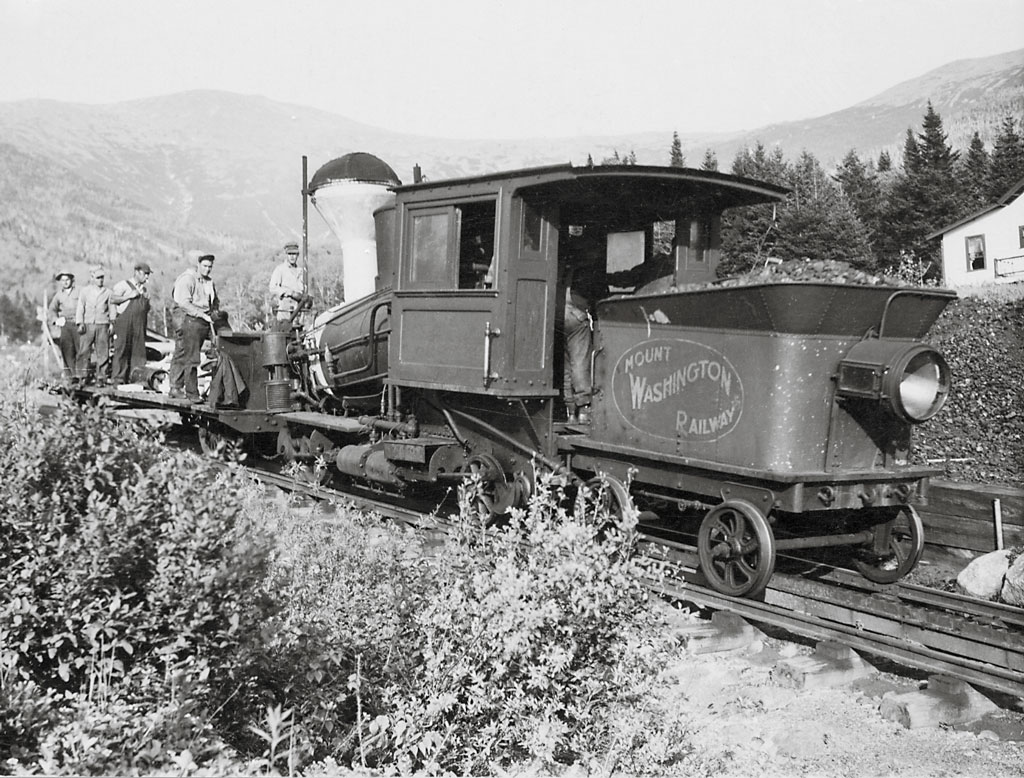Six years after March built the Cog, the Swiss opened Europe’s first cog railway at Mount Rigi in 1875. (Rigi operates D.C. electric trains and occasional steam power.)Marsh ran the Cog until his death in 1884, when it came under the ownership of the Concord & Montreal, which in 1876 had built the branch from Fabyan to the Base Station. In 1894, the C&M became part of the Boston & Maine. By 1931, B&M had abandoned the branch and sold it to Colonel Henry S. Teague. At his death 20 years later, the Cog passed to Dartmouth College, the Colonel’s alma mater and support in times of financial trouble. General manager Arthur S. Teague, unrelated to Henry but his friend and associate, ran the railroad until 1962, when he bought it. After Arthur’s death, his wife, Ellen, became owner and their son, Charles Arthur Teague, eventually took over as a hands-on president and general manager.
In 1982, when I read William Least Heat Moon’s Blue Highways, his first and best travel book, I thought of my 1980 visit to the Cog when I came to his comment about Fredericksburg, Texas: “Things live on here in the only way the past ever lives — by not dying. It wasn’t a town brought back from the edge of history; rather, it was just slow getting there.” — Karl Zimmermann
KARL ZIMMERMANN, a frequent TRAINS and CLASSIC TRAINS contributor, is the author of numerous books, including his latest, “Little Trains to Faraway Places.”














